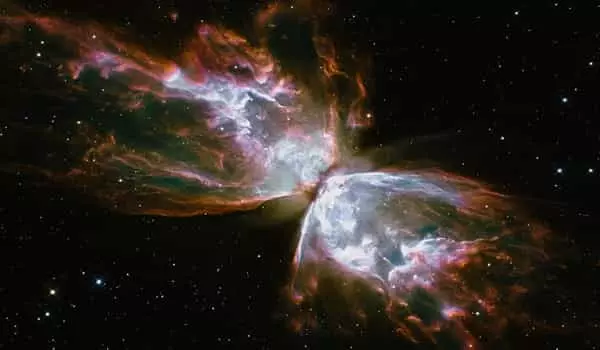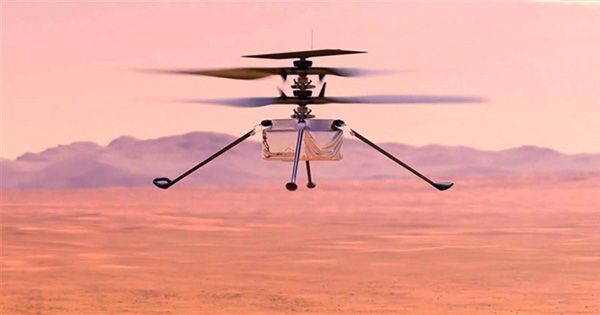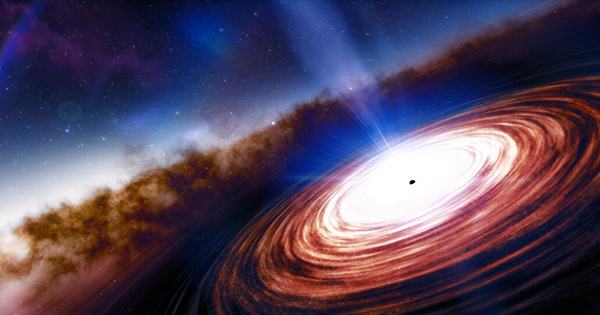Astronomical research has long focused on the formation of galactic stars. Decades of successful observations and theoretical modeling have provided us with a solid understanding of how gas collapses inside and outside of our own Milky Way to form new stars. However, astronomers have discovered that not all galaxies in the local universe are actively forming stars, thanks to all-sky observation programs such as the Sloan Digital Sky Survey (SDSS).
According to astronomers, black holes with masses equivalent to millions of suns stifle the birth of new stars. The researchers resolve a 20-year-long debate on star formation by using machine learning and three cutting-edge simulations to back up results from a large sky survey. Joanna Piotrowska, a Ph.D. student at the University of Cambridge, will present the new research at the National Astronomy Meeting online (NAM 2021).
Star formation in galaxies has long been a focus of astronomical study. Decades of successful observations and theoretical modeling have resulted in a solid understanding of how gas collapses to form new stars both within and beyond the Milky Way. However, thanks to all-sky observing programs such as the Sloan Digital Sky Survey (SDSS), astronomers discovered that not all galaxies in the local Universe are actively star-forming; there is a large population of “quiescent” objects that form stars at much slower rates.
Black holes with masses equivalent to millions of suns do put a brake on the birth of new stars, say astronomers. Using machine learning and three state-of-the-art simulations to back up results from a large sky survey, the researchers resolve a 20-year long debate on the formation of stars.
The question of what stops star formation in galaxies, which has been debated for the past 20 years, remains the biggest unknown in our understanding of galaxy evolution. Piotrowska and her colleagues devised an experiment to determine what might be to blame.
The astronomers investigated what we would expect to see in the real Universe as observed by the SDSS using three cutting-edge cosmological simulations: EAGLE, Illustris, and IllustrisTNG.
The astronomers used a machine-learning algorithm to classify galaxies as star-forming or quiescent, asking which of three parameters: the mass of the supermassive black holes found at the center of galaxies (these monster objects have millions or even billions of times the mass of our Sun), the total mass of stars in the galaxy, or the mass of the dark matter halo surrounding galaxies, was the most important.

These parameters allowed the team to determine which physical process is responsible for forcing galaxies into semi-retirement: energy injection by supermassive black holes, supernova explosions, or shock heating of gas in massive halos.
According to the new simulations, the mass of a supermassive black hole is the most important factor in stifling star formation. The simulation results, crucially, match observations of the local Universe, lending credence to the researchers’ findings.
The Schwarzschild solution to the General Theory of Relativity predicts black holes. Black holes have not been directly observed. However, objects so small and massive that they can only be black holes have been observed indirectly. There are three types of black holes that are thought to exist.
The high temperatures and pressures that existed after the big bang are thought to have created primordial black holes. According to some theories, dark matter is made up of primordial black holes. When the core of a star with a mass greater than three times that of the Sun collapses under gravity, a stellar black hole is formed. They have a range of up to 30 kilometers.
Supermassive black holes have a mass that is millions or billions of times that of the Sun. Most large galaxies are thought to have a supermassive black hole at their cores. At the center of our Milky Way galaxy is a black hole with a mass four million times that of the Sun. It is smaller than the size of Neptune’s orbit.
Piotrowska claims: “It’s fascinating to see how the simulations accurately predict what we see in the real Universe. Supermassive black holes, which have masses equivalent to millions or billions of Suns, have a significant impact on their surroundings. These monstrous objects force their host galaxies to take a break from star formation.”















